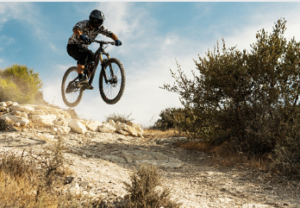Gravel bikes may appear similar to road bikes at first glance, but their more rugged components and wide selection of tire sizes make them capable of traversing rough terrain. Many also feature 1x drivetrains which reduce the number of components that could break or malfunction and increase efficiency.
 Versatility
Versatility
gravel bikes NZ differ from road bikes by featuring wider tires (up to 45c) to tackle rougher terrain and accommodate longer wheelbases for added stability and comfort on rough roads and trails.
Handling on a gravel bike should strike an ideal balance between agility and composure, with coordinated geometry, rider position, frameset torsional stiffness and riding style all working towards this end goal.
Gravel bikes often include additional mounts for accessories and luggage, making them suitable for long-distance riding or bikepacking trips. Gravel bikes are designed to handle rough terrain with minimum maintenance while offering speed and efficiency, making them an attractive alternative to hybrid bikes for riders looking to ride off-road but prioritising speed over efficiency.
Comfort
Gravel bikes are designed to easily take on rough terrain and rugged conditions, forcing riders to slow down. They typically feature a longer wheelbase for stability; comfortable and relaxed geometry; wider (35 mm or more), knobby tires for improved traction on rough surfaces like gravel; and powerful disc brakes to stop in various weather conditions.
Many models combine a road bike’s speed with mountain biking’s capability. Other styles may focus more on comfort for leisurely road rides or commutes. Some even come equipped with mounting points for mudguards!
The best gravel bikes NZ strike a delicate balance between agility and composure, responding quickly to steering input while remaining stable on uneven or bumpy roads. While suspension can help cushion impacts from rough terrain, adding weight and necessitating regular maintenance checks, some bikes lack this feature.
Performance
Gravel bikes feature drivetrains that handle wide tires, enabling riders to run lower pressures for greater comfort and traction over rough terrain. Furthermore, these bikes typically come equipped with mounts for fenders and rear racks for multi-day rides.
Our testers discovered that gravel bikes performed very well in our ride quality metric, assessing how the bike responded to steering and pedalling input responsively. The ideal bikes offer an optimal balance between agility and composure, offering smooth handling that doesn’t feel nervous over uneven terrain.
Stability
Gravel bikes offer greater stability than road bikes when riding over rough surfaces, making them the ideal solution. Their more compliant frame designs, relaxed geometry, wider knobby tires and components that increase rider comfort and confidence when descending steep hills or traversing rugged terrain set a gravel bike apart from its road biking counterparts.
Some gravel bikes NZ offer front suspension to further smooth out jarring surface conditions; for instance, the Lauf True Grit offers unique spring leaf front suspension. However, most riders should optimise tyre pressures to maximise comfort and traction over any surface.
Many gravel bikes feature a wider gear range to help riders climb steep, long climbs. It might involve using either a 1x drivetrain with low ratio gearing or a 2x chainring and cassette setup with compact chainring and cassette, both of which offer great solutions depending on what terrain is most often covered by their riders. Furthermore, suspension setup and other add-ons can further expand a bike’s capabilities.
Luggage
Gravel bikes combine road efficiency with off-road capability. As such, they typically feature disc brakes and clearance for wider (sometimes up to 47c) tyres than what can be found on road bikes. Furthermore, these bikes may come equipped with extra mounts that enable riders to carry accessories like frame bags, cages or pannier racks that provide self-support when away from shops and other food and water sources for long rides.
Many gravel bikes use frames constructed from aluminium, which is both affordable and long-lasting. Carbon options may add weight while needing more regular maintenance to maintain good condition.
A typical gravel bike will have a slim frame shape with a sloping top tube and small rear triangle designed to save weight while providing stability on off-road terrain. Many frames include features like dropper seatposts that allow riders to shift their weight during riding; others feature flared drops to make climbing or descending technical sections of trail easier; or have compliance and vibration-absorbing features built into chainstays and seat stays, making for a smoother ride overall.